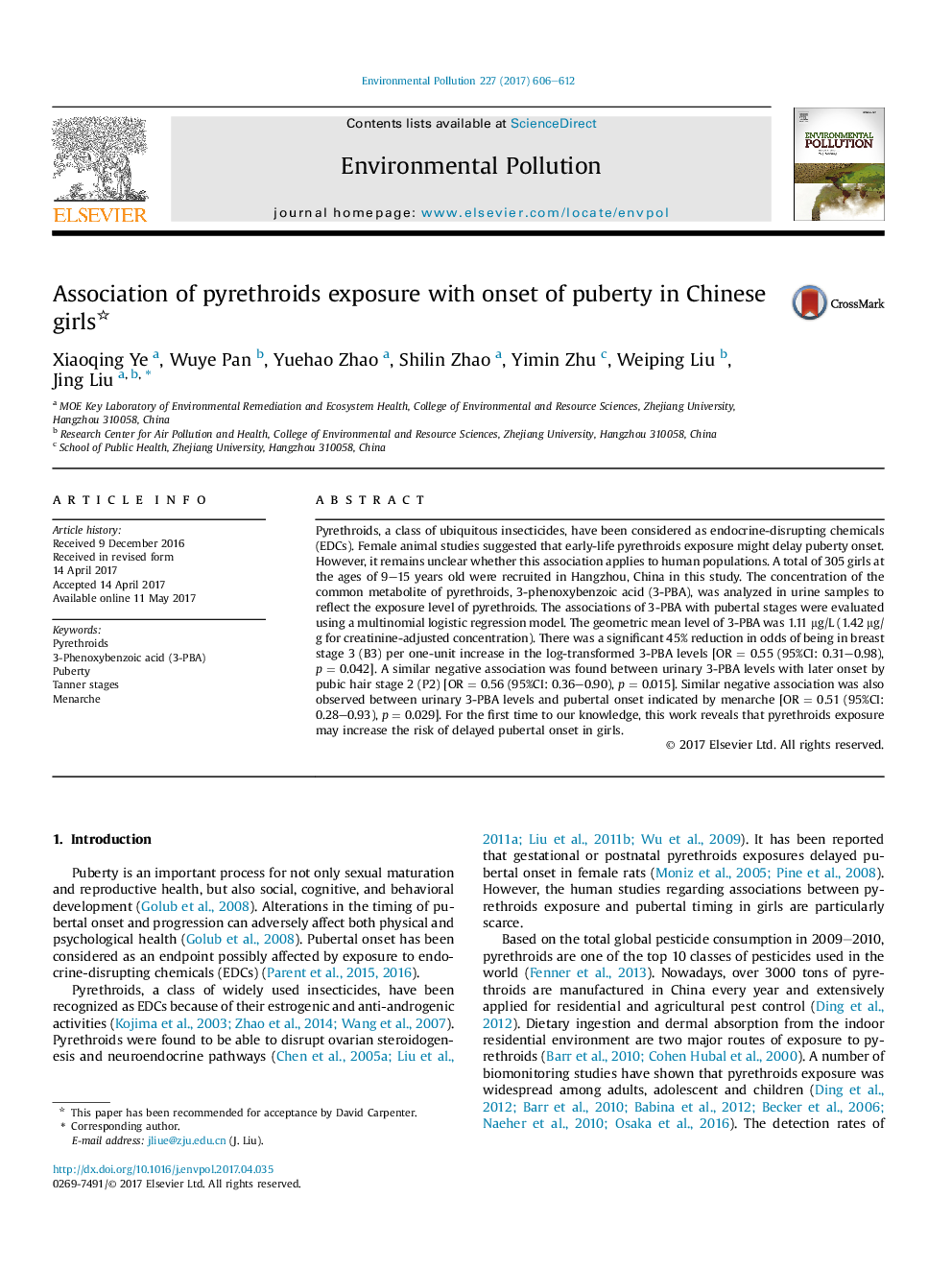| Article ID | Journal | Published Year | Pages | File Type |
|---|---|---|---|---|
| 5749185 | Environmental Pollution | 2017 | 7 Pages |
â¢Urinary pyrethroids metabolites levels were measured in 305 Chinese girls at ages 9-15.â¢Pyrethroids levels are negatively correlated with Breast Tanner stage in girls.â¢Pyrethroids levels are negatively correlated with Pubic hair Tanner stage in girls.â¢Pyrethroids levels are negatively associated with menarche age in girls.
Pyrethroids, a class of ubiquitous insecticides, have been considered as endocrine-disrupting chemicals (EDCs). Female animal studies suggested that early-life pyrethroids exposure might delay puberty onset. However, it remains unclear whether this association applies to human populations. A total of 305 girls at the ages of 9-15 years old were recruited in Hangzhou, China in this study. The concentration of the common metabolite of pyrethroids, 3-phenoxybenzoic acid (3-PBA), was analyzed in urine samples to reflect the exposure level of pyrethroids. The associations of 3-PBA with pubertal stages were evaluated using a multinomial logistic regression model. The geometric mean level of 3-PBA was 1.11 μg/L (1.42 μg/g for creatinine-adjusted concentration). There was a significant 45% reduction in odds of being in breast stage 3 (B3) per one-unit increase in the log-transformed 3-PBA levels [OR = 0.55 (95%CI: 0.31-0.98), p = 0.042]. A similar negative association was found between urinary 3-PBA levels with later onset by pubic hair stage 2 (P2) [OR = 0.56 (95%CI: 0.36-0.90), p = 0.015]. Similar negative association was also observed between urinary 3-PBA levels and pubertal onset indicated by menarche [OR = 0.51 (95%CI: 0.28-0.93), p = 0.029]. For the first time to our knowledge, this work reveals that pyrethroids exposure may increase the risk of delayed pubertal onset in girls.
Graphical abstractDownload high-res image (166KB)Download full-size image
